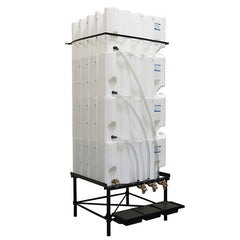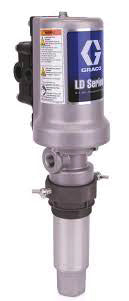+ Discounts in Cart!
All promo and sales prices auto apply in your cart.

Bulk oil storage and other fluids can easily be stored in stackable tanks or mobile tanks with casters, and with or without pump equipment. Depending on volume, bulk purchasing can cut the price you pay for fluids by as much as 50 percent.
If you purchase your fluids in bulk quantities, you have the option to add a bulk oil system to that to cut labor costs as well. These larger quantities of fluids eliminate continuous removal and replacement of empty drums, and there's no need to coordinate empty barrel storage, pick-ups or deposit-fee reimbursements. With bulk storage, time once spent on those chores can go to billable service work. As an example, if you go through four drums a month and each drum can take 30 minutes of labor at $15 an hour, you save $360 a year by eliminating handling. Add to that the cost of drum disposal, say $25 each, then you save $1,560 annually if you can eliminate four drums each month.
Waste reductions can also provide savings month after month. For example, eliminate the drum bottom waste of 3 inches (approximately 45 lbs.), costing 50 cents a pound in four drums a month and you save $1,080 a year.
So, in our example you have saved $2,640 a year in handling time, oil drum disposal and waste reduction. Now the question, is the time is right for you to invest in a bulk oil storage and dispense system?

There are many types of bulk oil tank options available: including inexpensive gravity feed tank systems, steel bulk oil storage tanks, and multi-fluid tanks with dispense equipment.
You should also think about where you need to dispense the fluids. Both stationary tanks and mobile oil tanks are common. Stationary tanks are usually filled on-site from a large bulk oil delivery truck. Mobile tanks can be filled on site, but IBC tanks are often filled at the plant, shipped to you, then returned to the for refilling.

Transferring a high volume of oil from a bulk fluid storage tank requires loading the pump at a high rate.
Air-operated oil pumps are described in terms of the ratio of fluid pressure to air pressure: a 3:1 ratio pump will develop 300 psi of oil pressure with 100 psi of inbound air pressure. Because efficiency increases with lower ratio pumps, supply lines need to be larger to reduce flow restrictions.
Lastly, consider where you will have the pump and reel placed. Many gravity feed tank systems are modernized to offer the proper mounting equipment that supports the equipment on the side of the tanks. Commonly, top mounted pump equipment is available for steel oil tanks. Many bulk oil storage systems can be ordered to arrive pre-assembled so you will not have to worry about any setup hassles.
Leave a comment